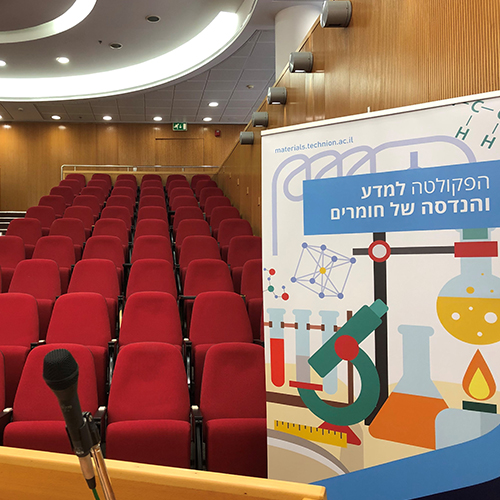
Mr. Avraham Erez - M.Sc. Candidate
26/10/2025
David Wang Auditorium, 3rd Floor, Dalia Maydan Bldg.
13:30
Nanoparticles have been the subject of extensive research in recent decades due to their unique properties and applications. In particular, their mechanical properties differ significantly from those of bulk materials. Earlier studies indicated that nanoparticles fabricated by the solid-state dewetting method can, in some cases, reach the theoretical strength of the material they are made of.
We have studied the influence of chemical treatment on the mechanical properties of gold nanoparticles. Our findings indicate that certain treatments result in massively improved elasticity. During the initial stages of deformation the particles reach up to 50% quasi-elastic strain before the onset of plastic deformation, more than twice the strain achieved in pristine gold nanoparticles. Such behavior rivals the elasticity of many polymers while maintaining the ultrahigh strength characteristic to metal nanoparticles.
We propose a model to explain this behavior, suggesting that stacking fault tetrahedra (SFTa) are formed by the agglomeration of vacancies generated by the chemical treatment. These SFTa represent exhaustible dislocation sources which vanish after only a few dislocations are produced during the compression process. The new dislocations cause limited plastic deformation until all the SFTs vanish, after which the particle continues to deform elastically until the onset of strain burst characteristic for plasticity controlled by massive dislocation nucleation. We present the evidence obtained with the aid of transmission electron microscopy confirming the presence of SFTa.


